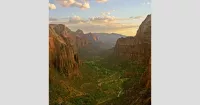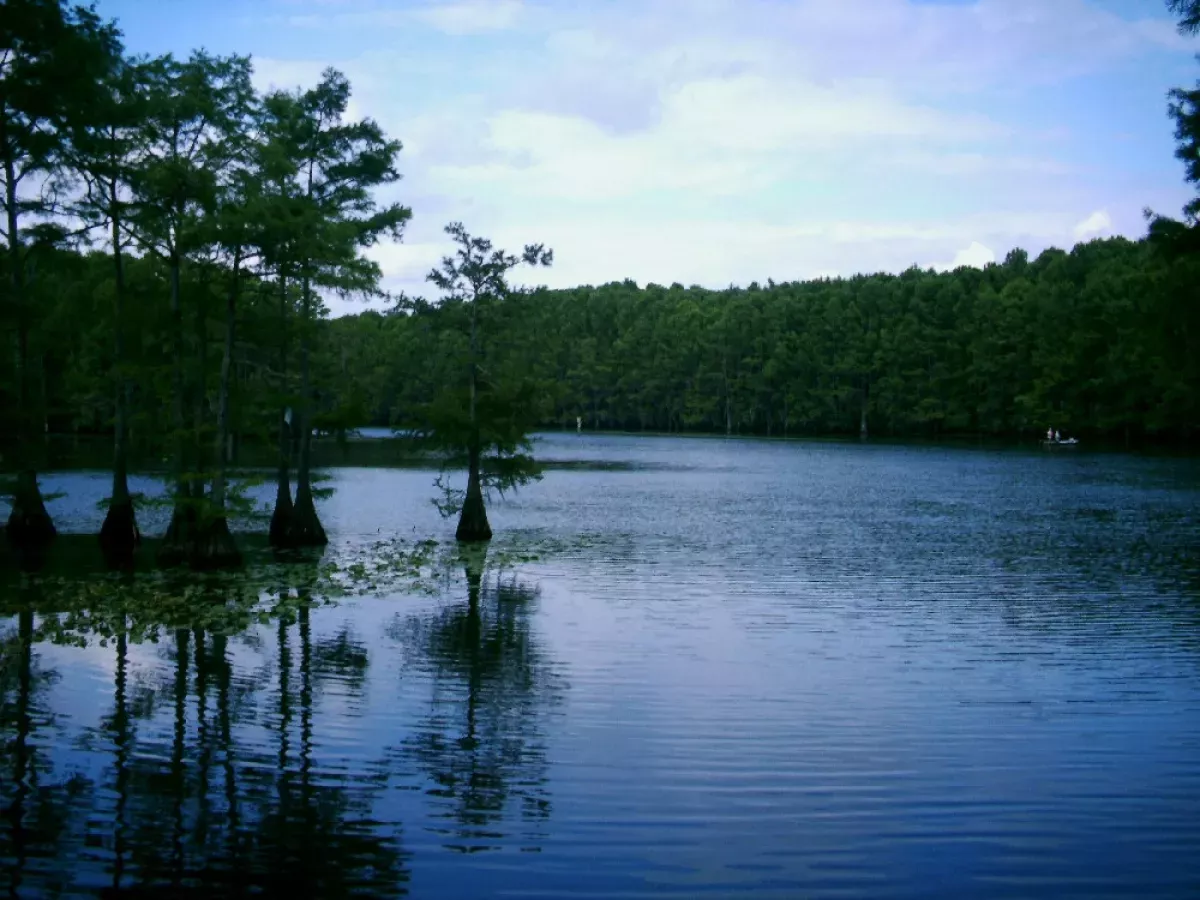Caddo Lake, spanning 25,400 acres, sits on the Texas-Louisiana border. Named after the Caddo Native Americans, the lake and its surrounding bayou wetlands were once home to this tribe. However, the Caddo people were forcibly removed from their ancestral lands during the 19th century by the U.S. government, who relocated them to Indian Territory.
1911: World's First Over-Water Oil Platform
In 1911, the world's first over-water oil platform, Ferry Lake No. 1, was constructed on Caddo Lake.
1913: Lionel Janes Conducts Federal Survey
Ecologist Lionel Janes conducted a federal survey of Caddo Lake (called Ferry Lake at the time) in 1913 for the Department of Interior.
1913: Survey of Caddo Lake
In 1913, a survey was conducted to study the formation of Caddo Lake, known as Ferry Lake at the time.
1914: Lionel Janes Conducts Federal Survey
Ecologist Lionel Janes conducted a federal survey of Caddo Lake (called Ferry Lake at the time) in 1914 for the Department of Interior.
1914: Survey of Caddo Lake
In 1914, a survey was conducted to study the formation of Caddo Lake, known as Ferry Lake at the time.
1934: Establishment of Caddo Lake State Park
In 1934, in an effort to preserve parts of Caddo Lake, Texas established a 483-acre state park.
1965: Bigfoot Sightings Begin at Caddo Lake
According to the North American Wood Ape Conservancy (NAWAC), alleged sightings of Bigfoot in the vicinity of Caddo Lake started in 1965.
October 1993: Caddo Lake Designated as Ramsar Convention Site
In October 1993, due to the efforts of the Caddo Lake Institute, Caddo Lake was designated as one of thirteen protected areas in the United States by the Ramsar Convention, an international effort to protect wetlands.
2001: Legal Battle Over Water Rights Begins
The year 2001 marked the beginning of a legal battle between Caddo Lake residents and the City of Marshall, Texas over water rights.
2003: Caddo Lake Flora and Fauna Assessment
In 2003, an assessment determined that Caddo Lake was home to a diverse range of flora and fauna, including 189 species of trees and shrubs, 75 grasses, 42 woody vines, 216 types of birds, 90 fish and reptile species, and 47 mammal species. Notably, 44 of these species were categorized as endangered, threatened, or rare.
2003: Legal Battle Over Water Rights Concludes
The legal battle over water rights between Caddo Lake residents and the City of Marshall, Texas, concluded in 2003.
2005: Giant Salvinia Threatens Caddo Lake
By 2005, Caddo Lake faced a new threat: the rapid spread of Giant Salvinia, an invasive aquatic fern. This infestation, exacerbated by the aftermath of Hurricanes Katrina and Rita, posed a significant challenge to the lake's ecosystem.
2006: Bigfoot Documentary Features Caddo Lake
The Travel Channel aired a documentary in 2006 titled "Bigfoot," which featured Caddo Lake as a prominent location for reported Bigfoot sightings.
Trending

1 month ago James Gunn Plans Superman Sequel Shooting Soon; Teases 'Peacemaker' Role in DCU.
1 month ago Motorcycle crash in Beloit on Cranston Road: Police investigate single-vehicle incident.

1 month ago Zion: Influencers' Storm, Hidden Trail & East Mesa Hike, Views and Fewer Crowds
1 month ago Qatar Airways and Accenture partner for AI-driven aviation excellence, creating 'AI Skyways'.

1 month ago Ketel Marte's Absence and Day Off Requests Cause Frustration Among Diamondbacks Teammates

1 month ago Jamie Lee Curtis Celebrates 'Freakier Friday' with Fan Event and Lookalike Screening
Popular

Charlie Kirk is a prominent American conservative activist author and...
Turning Point USA TPUSA is a conservative nonprofit organization founded...

Kash Patel is an American lawyer and former federal prosecutor...

Candace Owens is an American political commentator and author known...

George Soros is a prominent American investor and philanthropist As...

Bernard Sanders is a prominent American politician serving as the...

